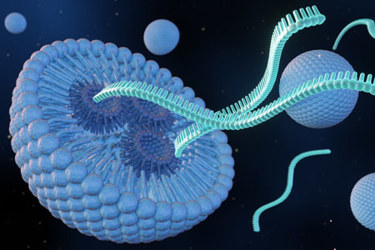Oligonucleotide Lipid Nanoparticle Production And Characterization

The clinical success of systemically administered oligonucleotides and gene therapies—including small interfering RNA (siRNA), messenger RNA (mRNA), and genome-editing technologies such as CRISPR/Cas9—depends heavily on the development of suitable formulations that ensure safety, effective delivery to target tissues, and therapeutic efficacy.
Among non-viral delivery platforms, lipid nanoparticles (LNPs) have emerged as a particularly promising strategy for oligonucleotide delivery, a fact underscored by the U.S. FDA approval of Patisiran™ (developed by Alnylam Pharmaceuticals), the first siRNA-based therapeutic using LNPs. However, conventional batch synthesis methods for liposomal or LNP formulations often result in poor control over particle size and size distribution, typically requiring time-consuming and material-intensive post-processing techniques such as sonication or membrane extrusion to achieve uniformity. These steps not only introduce potential degradation risks for sensitive oligonucleotides but also complicate early-stage formulation development and pose significant challenges during scale-up for clinical or commercial manufacturing.
To address these limitations, microfluidic mixing technologies have been developed to enable controlled, rapid nanoprecipitation of lipid and oligonucleotide components. By precisely manipulating the characteristic mixing timescale (τₘ), microfluidic approaches provide reproducible and scalable methods for producing uniformly sized LNPs, thereby enhancing formulation stability, preserving nucleic acid integrity, and streamlining both research and production workflows.
Get unlimited access to:
Enter your credentials below to log in. Not yet a member of Cell & Gene? Subscribe today.
